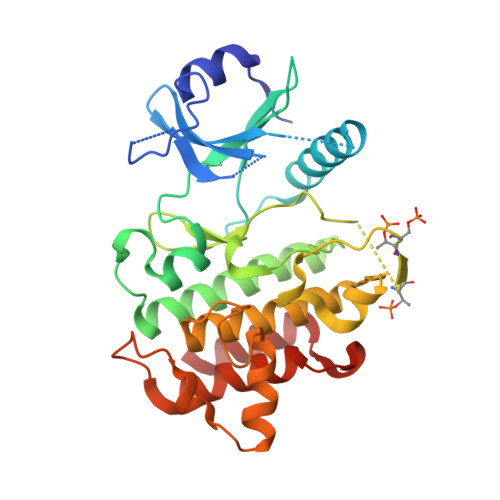Optimization of permeability in a series of pyrrolotriazine inhibitors of IRAK4.
Degorce, S.L., Anjum, R., Dillman, K.S., Drew, L., Groombridge, S.D., Halsall, C.T., Lenz, E.M., Lindsay, N.A., Mayo, M.F., Pink, J.H., Robb, G.R., Scott, J.S., Stokes, S., Xue, Y.(2018) Bioorg Med Chem 26: 913-924
- PubMed: 29398441
- DOI: https://doi.org/10.1016/j.bmc.2018.01.008
- Primary Citation of Related Structures:
6F3D, 6F3E, 6F3G, 6F3I - PubMed Abstract:
We have developed a series of orally efficacious IRAK4 inhibitors, based on a scaffold hopping strategy and using rational structure based design. Efforts to tackle low permeability and high efflux in our previously reported pyrrolopyrimidine series (Scott et al., 2017) led to the identification of pyrrolotriazines which contained one less formal hydrogen bond donor and were intrinsically more lipophilic. Further optimisation of substituents on this pyrrolotriazine core culminated with the discovery of 30 as a promising in vivo probe to assess the potential of IRAK4 inhibition for the treatment of MyD88 mutant DLBCL in combination with a BTK inhibitor. When tested in an ABC-DLBCL model with a dual MyD88/CD79 mutation (OCI-LY10), 30 demonstrated tumour regressions in combination with ibrutinib.
Organizational Affiliation:
Medicinal Chemistry, Oncology, IMED Biotech Unit, AstraZeneca, Cambridge Science Park, Unit 310 Darwin Building, Cambridge CB4 0WG, United Kingdom. Electronic address: sebastien.degorce@astrazeneca.com.



















